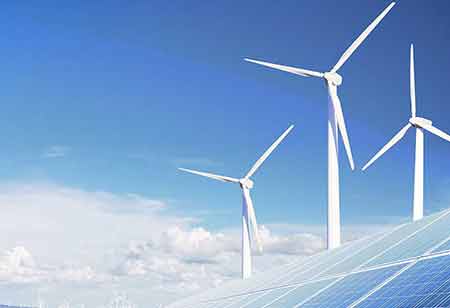Thank you for Subscribing to Energy Business Review Weekly Brief
Significant Sustainable Energy Practices to Watch in 2022
However, while it would be ideal to believe that everyone wants to preserve the world, there are also substantial financial incentives.

By
Energy Business Review | Wednesday, August 03, 2022
Stay ahead of the industry with exclusive feature stories on the top companies, expert insights and the latest news delivered straight to your inbox. Subscribe today.
The shift from fossil fuels to renewable energy sources is expected to reach unprecedented levels in 2022.
FREMONT, CA: Almost everyone agrees that humanity must stop burning fossil fuels to lessen their damage to the planet and ecology. As people seek sustainable or renewable alternatives to coal, oil, and gas, this has spawned several scientific and corporate advancements.
However, while it would be ideal to believe that everyone wants to preserve the world, there are also substantial financial incentives. According to a recent report, the renewable energy market is anticipated to grow from $880 billion to more than $2 trillion by 2030. As a result of greater public awareness of the importance of environmental and social governance (ESG) issues, significant political incentives exist.
In 2022, the amount of fossil fuels replaced by renewable energy is expected to hit a new high. This is also the year that previously unheard-of energy sources make their public debut after years of development in laboratories and trial programs. As a result, let's take a look at some of the most anticipated new energy market trends over the coming year.
Green hydrogen energy
Hydrogen is the most abundant element in the universe, yet its combustion produces negligible greenhouse gas emissions, making it an ideal fuel source. Because of these two features, it has excellent potential as a source of energy. Making it into fuel has traditionally required burning fossil fuels and releasing carbon dioxide into the atmosphere. Coal-derived hydrogen is brown, but natural gas-derived hydrogen is grey.
Renewable energy sources like wind and solar power can be used to provide the electricity needed for green carbon production, making the process carbon-free. For instance, the first significant green hydrogen pipeline on the continent will be built from North Sea offshore wind farms by several major European energy businesses, including Shell and RWE. Hydrogen-powered electric vehicle charging systems have been created by ElektrikGreen, a firm based in the United States.
The Internet of Energy (IoE)
Internet of Things (IoT) is involved with the production and distribution of electricity. IoE is intrinsically linked to energy decentralization—the transition toward a more sustainable power infrastructure in which energy is used as close as feasible to the time and places it is created.
This new energy infrastructure paradigm necessitates a high degree of automation to manage the new technology platforms, and the financial framework markets require supporting energy trading and delivery. As with IoT, IoE comprises edge and cloud architecture, with sensors and scanners processing data close to the source (where electricity is generated or consumed) and through remote data centers. This technology layer will enable utility firms to engage in real-time, data-driven decision-making and predictive maintenance to increase efficiency and enhance customer satisfaction. Other emerging technology developments, such as blockchain, which will enable transparent and secure records of trades and payments, also play a significant role.






